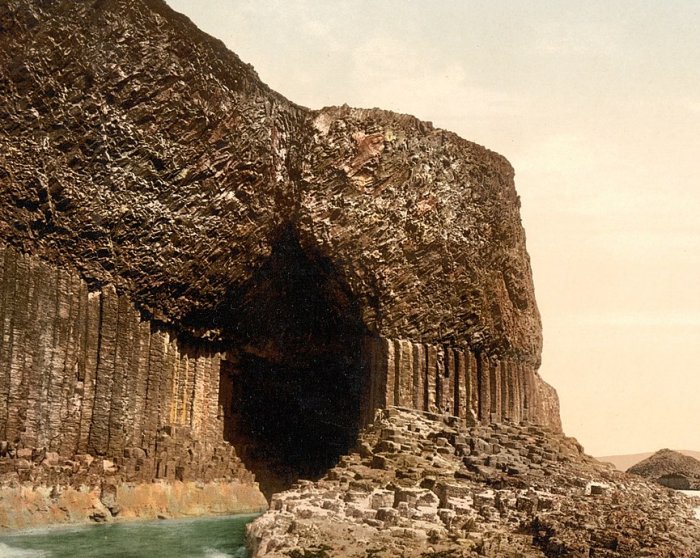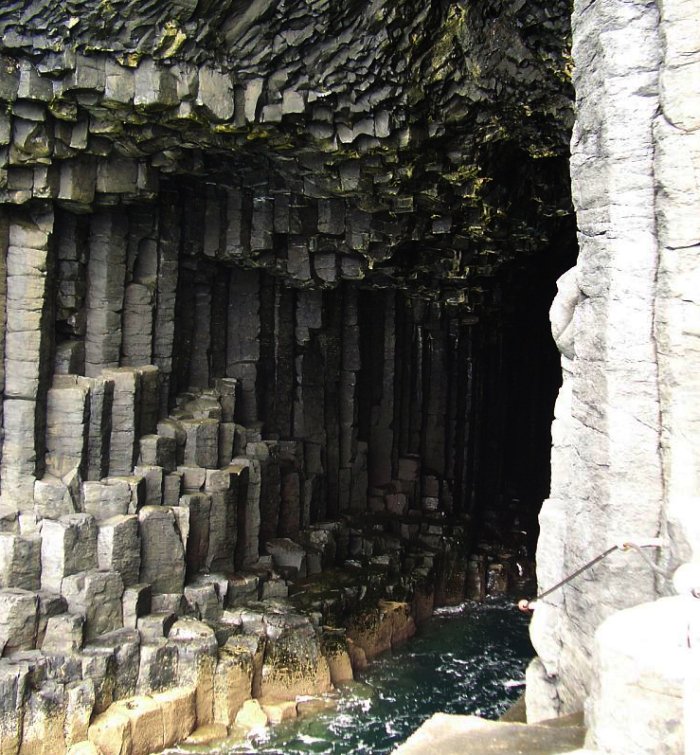Natural Wonders: ‘Fingal’s Cave’ – An Enigmatic Place Shrouded In Mystery And Legend
A.Sutherland - AncientPages.com - The cathedral-like structure - the least-visited and unique place in the world - is located on the barren and uninhabited island of Staffa, six miles off the western coast of Mull, which is part of the chain of islands known as the Inner Hebrides, Scotland.
Fingal's Cave, Island of Staffa, Scotland. Image credit: Unknown author - Public Domain
Bizarre basalt pillars, unusual symmetry, and eerie sounds produced by the echoes of waves can be admired in a vast sea cave formed from hexagonal basalt and known as Fingal's Cave.
A unique 69m (227 feet) tall structure results from intense volcanic activity approximately 60 million years ago.
The cave was formed from the most spectacular, hexagonally jointed black basalt columns.
Its height is 20m (66 feet), and its mouth, surrounded by these columns, has an opening of 13m (42 feet). The pillars are from 6 to 12 m high.
The cave was discovered in 1772 by Sir Joseph Banks (1743-1820), a British explorer and naturalist. He visited the island of Staffa and Fingal's Cave during his expedition to Iceland. Ancient records say that the island shakes so much during violent storms that one family occupying a small hamlet near the island's center in the late 1790s was forced to leave.
The hexagonal columns of basalt on Staffa seem to have unusual qualities.
Basalt columns inside Fingal's Cave. Image credit: Karl Gruber - CC BY-SA 3.0
According to Salvatore M. Trento's "Field Guide to Mysterious Places of the Pacific Coast," a magnetic anomaly exists in the area. Very high magnetic readings have been recorded approximately twenty feet from the cliff face. Still, near ancient paintings that cover columns, the milligauss (one-thousandth of a gauss) readings dropped.
Historical sources confirm that prehistoric inhabitants lived in the region 8,000 years ago. Were they aware of locations with low magnetic readings that could cause special effects?
The Scottish historical novelist and poet Sir Walter Scott saw the famous Fingal's Cave. They listened to the unearthly music emitted by the dark-colored basaltic columns and water, affected by the ebb and flow of tides.
According to legend, an Irish giant and hero, Fingal (Finn mac Cumhail), built Staffa to avoid getting his feet wet when he walked across the sea from the Giant's Causeway in Ireland to Scotland to "lift" cattle.
His impression was that the place is "a naturally adorned cathedral where one touches the spirit of God." The Gaelic name means "the Cave of Music."
Also, Giant's Causeway's unique structure is ascribed to Fingal, who built it in Antrim, Northern Ireland, to walk to Scotland to fight his rival giant, Benandonner.
Fingal and his giant warriors are common in ancient Celtic mythology.
Finn, whose name means: white, a fair-haired person, also possessed a magic horn, which bore a mysterious curse, and Knud Mariboe in 'The Encyclopedia Of The Celts' writes that 'Finn's mother was the granddaughter of Nuada, king of Erin (Ireland) and leader of the Tuatha De Danann, and Ethlinn, the mother of Lugh of the Long Hand, a sun god, worshipped in the Celtic world...'
Today no one believes that Fingal built the Staffa's magnificent cave and the Giant's Causeway, but rather Mother Nature did millions of years ago.
Nevertheless, places like these have always been seen as something special, possibly sacred or mythical.
Written by – A. Sutherland - AncientPages.com Senior Staff Writer
Updated on March 13, 2023
Copyright © AncientPages.com All rights reserved. This material may not be published, broadcast, rewritten or redistributed in whole or part without the express written permission of AncientPages.com
More From Ancient Pages
-
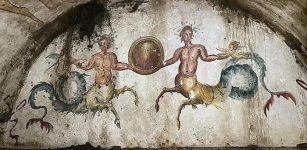 Remarkably Well-Preserved 2,000-Year-Old ‘Tomb Of Cerberus’ With Amazing Frescoes Discovered In Italy
Archaeology | Oct 12, 2023
Remarkably Well-Preserved 2,000-Year-Old ‘Tomb Of Cerberus’ With Amazing Frescoes Discovered In Italy
Archaeology | Oct 12, 2023 -
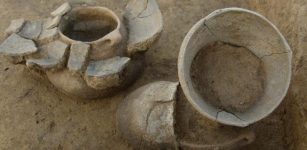 New DNA Study Links Early Europeans’ Cultural And Genetic Development Over Several Thousand Years
Archaeology | Aug 9, 2023
New DNA Study Links Early Europeans’ Cultural And Genetic Development Over Several Thousand Years
Archaeology | Aug 9, 2023 -
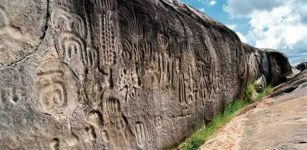 Unsolved Enigma Of The Inga Stone And Its Mysterious Ancient Undeciphered Signs
Artifacts | Jan 18, 2015
Unsolved Enigma Of The Inga Stone And Its Mysterious Ancient Undeciphered Signs
Artifacts | Jan 18, 2015 -
 A 2,700-Year-Old Urartians’ Ayanis Castle And Haldi Temple – Soon An Open-Air Museum
Archaeology | Aug 10, 2020
A 2,700-Year-Old Urartians’ Ayanis Castle And Haldi Temple – Soon An Open-Air Museum
Archaeology | Aug 10, 2020 -
 7,000-Year-Old Unique Artifacts Discovered Under Melting Ice In Canada
Archaeology | Nov 30, 2023
7,000-Year-Old Unique Artifacts Discovered Under Melting Ice In Canada
Archaeology | Nov 30, 2023 -
 Ancient Bronze Ring Bearing The Image Of St. Nicholas May Have Been Worn For Protection
Archaeology | Dec 28, 2021
Ancient Bronze Ring Bearing The Image Of St. Nicholas May Have Been Worn For Protection
Archaeology | Dec 28, 2021 -
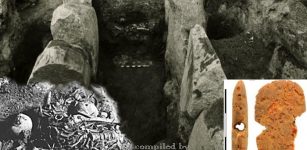 Renewed Excavations Of Unique More Than 5,000-Year-Old Megalithic Tomb Found In Poland
Archaeology | Dec 28, 2017
Renewed Excavations Of Unique More Than 5,000-Year-Old Megalithic Tomb Found In Poland
Archaeology | Dec 28, 2017 -
 Ancient Secrets Of The Nine Unknown Men: Guardians Of Forbidden Knowledge Hidden From Humanity
Ancient Mysteries | Aug 28, 2014
Ancient Secrets Of The Nine Unknown Men: Guardians Of Forbidden Knowledge Hidden From Humanity
Ancient Mysteries | Aug 28, 2014 -
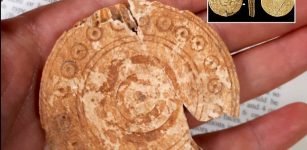 A Large ‘Tableman’ Sheds Some Light On People’s Fun And Games In Medieval Bedfordshire
Archaeology | Jun 19, 2023
A Large ‘Tableman’ Sheds Some Light On People’s Fun And Games In Medieval Bedfordshire
Archaeology | Jun 19, 2023 -
 On This Day In History: First Battle Of The Mexican War Was Fought At Palo Alto – On May 8, 1846
News | May 8, 2016
On This Day In History: First Battle Of The Mexican War Was Fought At Palo Alto – On May 8, 1846
News | May 8, 2016 -
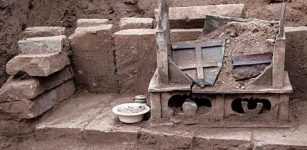 Does This Ancient Box Contain Buddha’s Cremated Remains?
Archaeology | Nov 15, 2017
Does This Ancient Box Contain Buddha’s Cremated Remains?
Archaeology | Nov 15, 2017 -
 Abundant Hominin Fossils Dating Back 300,000 Years Excavated In Hualongdong (HLD), East China
Evolution | Aug 7, 2023
Abundant Hominin Fossils Dating Back 300,000 Years Excavated In Hualongdong (HLD), East China
Evolution | Aug 7, 2023 -
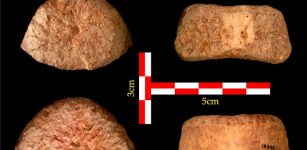 1.5 Million-Year-Old Human Vertebra Discovered In Israel’s Jordan Valley Sheds New Light On Migration From Africa To Eurasia
Archaeology | Feb 3, 2022
1.5 Million-Year-Old Human Vertebra Discovered In Israel’s Jordan Valley Sheds New Light On Migration From Africa To Eurasia
Archaeology | Feb 3, 2022 -
 Bad King John’s Lost Treasure May Be Hidden Near The Walpole Marsh In The Fenlands – Archaeologists Say
Archaeology | Mar 27, 2024
Bad King John’s Lost Treasure May Be Hidden Near The Walpole Marsh In The Fenlands – Archaeologists Say
Archaeology | Mar 27, 2024 -
 Has The Body Of Legendary Pirate Black Sam Finally Been Discovered Off The Coast Of Massachusetts?
Archaeology | Feb 17, 2021
Has The Body Of Legendary Pirate Black Sam Finally Been Discovered Off The Coast Of Massachusetts?
Archaeology | Feb 17, 2021 -
 Was Tutankhamun’s Chariot Equipped With Its Own Sunshade?
Archaeology | Jun 27, 2019
Was Tutankhamun’s Chariot Equipped With Its Own Sunshade?
Archaeology | Jun 27, 2019 -
 Library Of Celsus: Beautiful Classic Monument In Ephesus That Stored 12,000 Scrolls
Civilizations | Nov 14, 2018
Library Of Celsus: Beautiful Classic Monument In Ephesus That Stored 12,000 Scrolls
Civilizations | Nov 14, 2018 -
 Discovered: Mysterious 2,400-Year-Old Ancient Egyptian Shrine Belonging To 30th Dynasty Pharaoh Nectanebo I
Archaeology | Oct 6, 2015
Discovered: Mysterious 2,400-Year-Old Ancient Egyptian Shrine Belonging To 30th Dynasty Pharaoh Nectanebo I
Archaeology | Oct 6, 2015 -
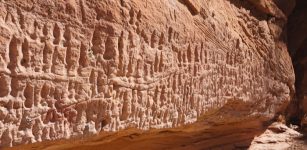 Story Behind A Huge Mysterious Ancient Rock Art Site In Central Queensland Revealed By Scientists
Archaeology | Sep 21, 2022
Story Behind A Huge Mysterious Ancient Rock Art Site In Central Queensland Revealed By Scientists
Archaeology | Sep 21, 2022 -
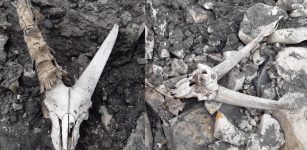 7,000-Year-Old Ibex Remains Found Under The Ice In Italy Are 1,700 Years Older Than Ötzi!
Archaeology | Dec 14, 2022
7,000-Year-Old Ibex Remains Found Under The Ice In Italy Are 1,700 Years Older Than Ötzi!
Archaeology | Dec 14, 2022

